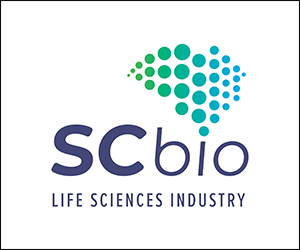Pharmacy pilot program improves health; saves money
February 17, 2015COLUMBIA, SC – A Comprehensive Medication Management Collaborative (CMMC)’s pilot program testing a new pharmacist-physician business model has shown enough potential for the program to expand to a new rural program in 2015.
The pilot project tested whether a new interdisciplinary business model could improve quality of care, patient access and ultimately lower health care costs.
The findings have a potential impact on millions — nationally, non-adherence to medications is associated with 125,000 deaths per year, 10 percent of all hospital admissions and an estimated $100 billion in direct and indirect health care costs.
Launched in November 2013, the program produced promising results:
- Patient outcomes and satisfaction improved.
- Provider productivity rose as physicians were able to focus on more complex cases.
- The healthcare system saved about $700 per patient visit, according to industry standards of cost avoidance.
“We are looking outside the traditional primary care model to optimize clinical quality outcomes for our patients – enhanced communication between the primary care provider, pharmacist and patient has the potential to lower medication non-adherence and minimize any confusion in a patient’s medication care plan thereby improving quality,” said collaborative co-director Brantley Arnau, president of Palmetto Primary Care Physicans (PPCP).
Launched in November 2013, the CMMC includes PPCP, the Kennedy Pharmacy Innovation Center (KPIC) and selected third-party payers. The pilot project was conducted by placing pharmacist Paul Fleming in the PPCP Trident office near Charleston, SC.
The success of the program led to PPCP hiring Fleming on a permanent basis. The Kennedy Center is now testing a rural pilot program in a primary care physician office in Lancaster, S.C. , where Kerri Brown Hatcher was recently hired as full-time pharmacist.
“We’re learning about how a primary care practice can best utilize the pharmacist, and which practices have a profile for contracting with or employing a pharmacist as a good business and patient care decision,” said CMCC co-director Bob Davis, KPIC’s endowed chair at the University of South Carolina (USC) campus of the South Carolina College of Pharmacy (SCCP).
“That’s a great benefit to the patient, which is ultimately what this is about. Our objective was to improve quality outcomes and medication adherence in an affordable way.”
The Comprehensive Medication Management Collaborative (CMMC)’s pilot program showed evidence of both improved healthcare outcomes and a sustainable business model:
Improved Healthcare Outcomes
Current research in healthcare suggests best outcomes are achieved through the interdisciplinary collaboration in a patient-centered medical home (PCMH).
There was a dramatic improvement in patients with previously uncontrolled conditions:
- More than 79 percent of high cholesterol patients improved in their LDL-C measures
- More than 72 percent and 81 percent of hypertensive patients improved their systolic (SBP) and diastolic (DBP) measures, respectively
- More than 77 percent of diabetic patients improved in their A1c measures
Patients and physician staff were highly satisfied with the business model:
- Satisfaction survey results on a 5-point Likert scale showed patients (4.9) and staff (5.0) overwhelmingly willing to recommend/refer patients to see the pharmacist
- 15 percent of the patients commented they would change behavior based on his coaching
Sustainable Business Model
The CMMC effort was measured in provider productivity, revenue, and cost avoidance – key components in determining the sustainability of the model.
Increased Productivity
- Average revenue increased by more than 15 percent without significant changes in the number of physician-patient visits — fewer medication-problem patients created room for new patients and more complex cases
Pharmacist-related Revenue
- Approximately 75 percent of the pharmacist’s expenses were covered when he was at 85 percent patient visit capacity
- Additional value included helping the team create a foundation to close care gaps that could earn performance incentives, and contributing to staff education and productivity
Cost Avoidance (CA) benefitting the patient and the payer.
- Projected CA averaged more than $700 a patient visit during April, May and June of 2014.
- CA is calculated based on projected follow up costs if no intervention had occurred
- The CMMC used common industry measures for reporting financial impact of pharmacist’s clinical interventions (medication allergies prevented, medication reconciliations, changes of dose, counseling for self-care, lab evaluations and adverse effects identified and remedied)












